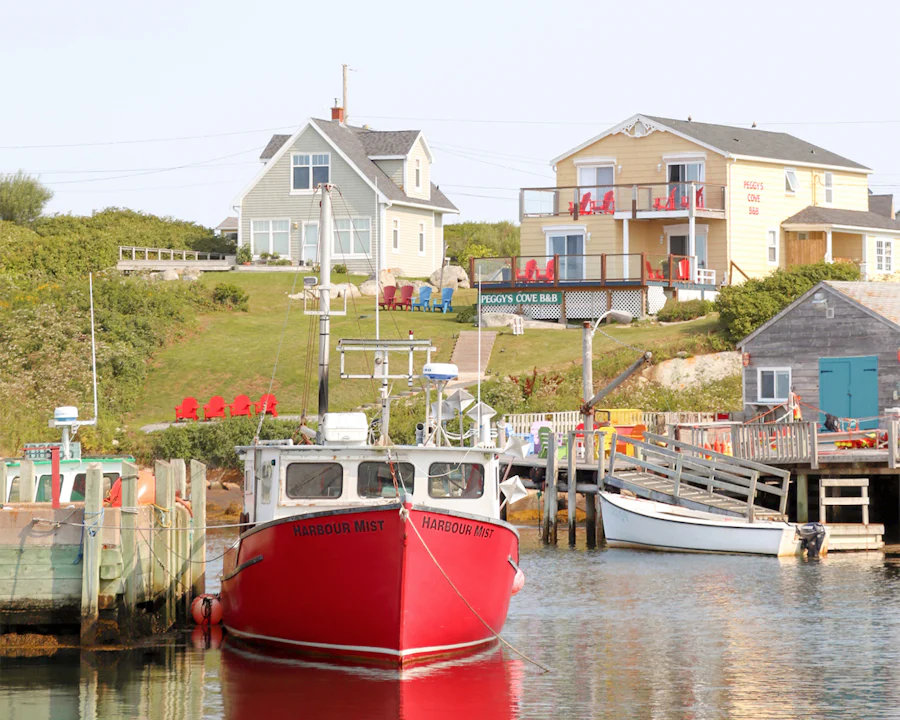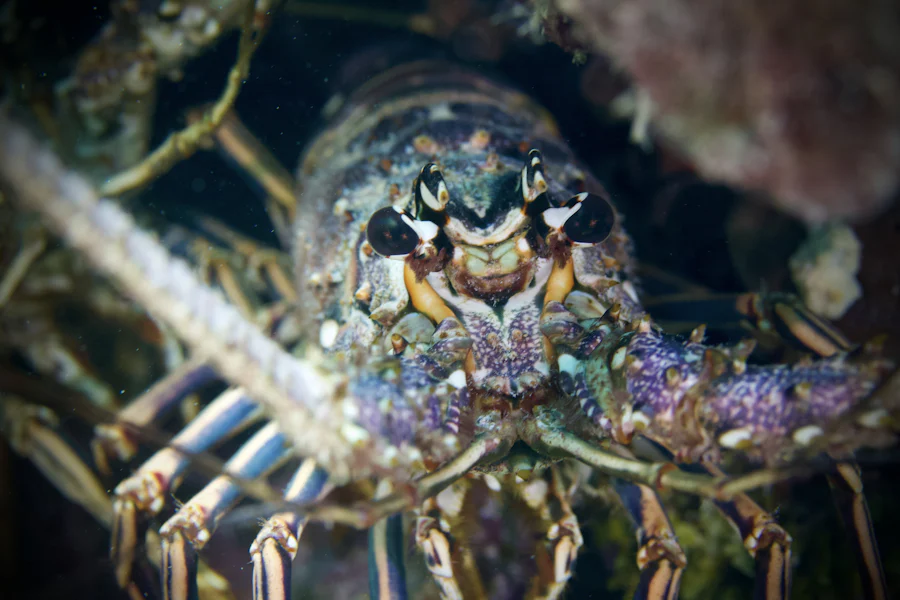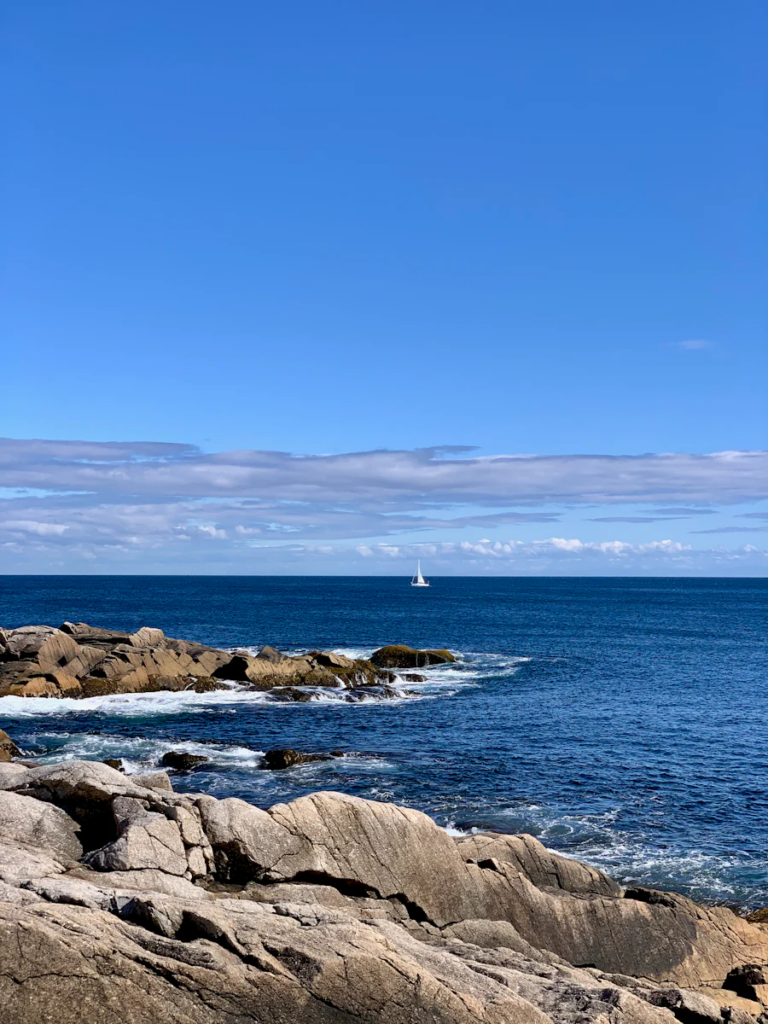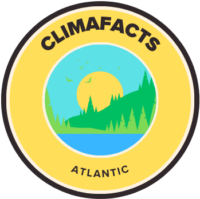Author: Abby Marsden
Date: July 14th, 2024

Article Title:
Climate Change Vulnerability of American Lobster Fishing Communities in Atlantic Canada
Article Affiliation:
Fisheries and Oceans Canada, Bedford Institute of Oceanography, Dartmouth, NS, Canada;
NOAA National Marine Fisheries Service, Geophysical Fluid Dynamics Laboratory, Northeast-Fisheries Science Center, Princeton University Forrestal, Princeton, NJ, United States
Article Citation:
Greenan, B. J., Shackell, N. L., Ferguson, K., Greyson, P.,
Cogswell, A., Brickman, D., … & Saba, V. S. (2019). Climate change vulnerability of American lobster fishing communities in Atlantic Canada. Frontiers in Marine Science, 6, 579.
INTRODUCTION
Climate change is likely to have a major impact on fisheries across Atlantic North America. Changing environmental conditions, including rising sea levels, increasing ocean temperatures, and noticeable shifts in zooplankton populations could have a major impact on fishery productivity and create large economic issues for coastal regions. It is clear that new frameworks and sustainable actions need to be planned in order to support vulnerable communities who are economically dependent on fish and lobster markets.
Climate Change Vulnerability of American Lobster Fishing Communities in Atlantic Canada presents research into the specific ways climate change affects lobster populations in Nova Scotia while also providing context surrounding how these issues will affect fishery-dependent economies in the province. Lobster was specifically chosen for the study considering its importance to the fishery industry in Canada as a whole, particularly in rural Atlantic Canada and Quebec. The methodology in this study uses multiple ocean models to illustrate temperature changes, reviews of current known research involving the vulnerability of lobsters to ocean warming, as well as in-depth analysis from both fishery owners and climate change adaptation specialists. Previous research done on the topic, particularly concerning rising ocean temperatures, have had mixed implications on Atlantic lobster populations depending on the study’s area. This lack of clarity therefore requires an in-depth study that can accurately predict the potential for problems and promote adaptation strategies that protect both the environment and Atlantic economies.

RESULTS AND DISCUSSION
Habitat suitability is expected to decline in parts of the Bay of Fundy due to warmer bottom temperatures. Similar studies, like Rheuban et al. (2017), have shown northward and offshore habitat expansion with a loss in southern inshore areas. However, using Gulf of Maine survey data, Tanaka et al. (2019) projected an increase in suitable lobster habitats.
Overall, the study’s data suggests that areas with higher suitable habitats are more vulnerable due to poor coastal infrastructure and socio-economic dependency on lobster fisheries. The Infrastructure Sub-Index scores (which are based on harbor conditions, the degree of facility protection, and total replacement cost) indicate moderate vulnerability across lobster fishing areas, with the Exposure Sub-Index (based on relative sea level change, maximum wind speed, mean significant wave height, coastal materials, and change in sea ice duration) showing a west-to-east increase in environmental drivers due to reduced winter sea ice. Although offshore lobster populations are not immediately vulnerable, heatwaves and rising temperatures are expected to disrupt lobster distribution and fishing seasons while also increasing the prevalence of epizootic shell disease.
Major strengths of the research include the integration of coastal and economic vulnerability with habitat projections, providing a comprehensive assessment regarding future risks. However, there are limitations in the study, including its inability to access inshore areas (perhaps the most affected area type) as well as the lack of future projections for how rising temperatures will affect ecosystem-related dynamics and Atlantic aquatic biodiversity. Effective fishery management and further inquiry will require regionally tailored planning, extensive monitoring, and collaborative efforts to properly address climate change and its impacts on lobster populations.

This study holds significant insights into the future of offshore lobster habitats in response to climate change, something especially considerable for Atlantic Canadians who lead the national lobster fishing industry. This is further underlined by the study’s findings, which highlight the need to address vulnerabilities in coastal infrastructure and socio-economic dependency on lobster. Additionally, the study aids in identifying regions undergoing higher risk levels due to shifts in lobster populations and plans for future challenges, such as overfishing, changes in fishing practices, and the need for diversification. For the general public, understanding these changes demonstrates the importance of proactive measures to mitigate the impacts of climate change on marine ecosystems and local economies.
CONCLUSION
In conclusion, this study projects declining lobster populations in warmer areas (such as the Bay of Fundy) and a general increase in the northeast. Further, the study highlights the importance of providing climate change informed projections to vulnerable fisheries to support sustainable actions. Adaptation strategies and infrastructure improvements are essential to reduce vulnerabilities heightened by climate change and sustain the livelihoods of coastal communities and their economies.
REFERENCES
Rheuban, J. E., Kavanaugh, M. T., and Doney, S. C. (2017). Implications of future northwest Atlantic bottom temperatures on the American lobster (Homarus americanus) fishery. J. Geophys. Res. Oceans 122, 9387–9398. doi: 10.1002/2017JC012949
Tanaka, K. R., Cao, J., Shank, B. V., Truesdell, S. B., Mazur, M. D., Xu, L., et al. (2019a). A model-based approach to incorporate environmental variability into assessment of a commercial fishery : a case study with the American lobster fishery in the Gulf of Maine and Georges Bank. ICES J. Mar. Sci. doi: 10.1093/icesjms/fsz024
